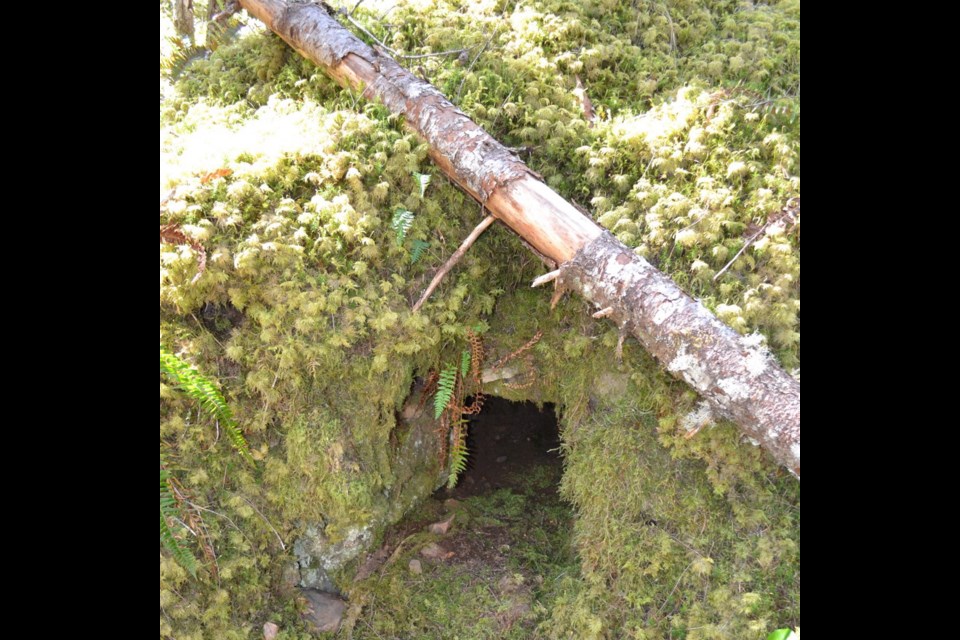A moss-covered mound located deep in the Sooke Hills Regional Park holds great historical significance for the region, a local historian says.
The igloo-shaped structure is actually an oven that once baked bread and other food for hundreds of men building the 43-kilometre Sooke flow line, said Sooke historian Elida Peers.
The concrete conduit, built from 1911 to 1915, brought drinking water from the Humpback reservoir to Greater Victoria before being decommissioned in 1971.
Four hundred people laboured to build the project.
The oven, which has a circumference of 12 metres, was discovered recently by a hiker, who reported it to Peers. The historian immediately suspected it was a larger version of a bread oven discovered in 1976 and flown by helicopter to the Sooke Region Museum.
The oven is a reminder of the immense effort that went into providing water to Victoria and neighbouring municipalities, Peers said.
“There were a lot of men from central Europe and everywhere that came out here to work,” she said.
A base camp was set up at Coopers Cove. Satellites, each with its own oven, were established along the flow line, Peers said. It wasn’t uncommon for workers to walk several miles to their work site, she said.
The ovens were fuelled by wood, which heated the rocks overnight. In the morning, the cook would remove the embers and put bread dough, placed in tins, inside the oven to bake slowly over a few hours.
The result was a crusty bread that would have been accompanied by venison, trout or grouse, Peers said.
There are no plans to move this oven to another location, but Peers wants people to see it and appreciate the contributions of the labourers to life in early Victoria.
Parks staff are looking at organizing tours so people can visit it.



